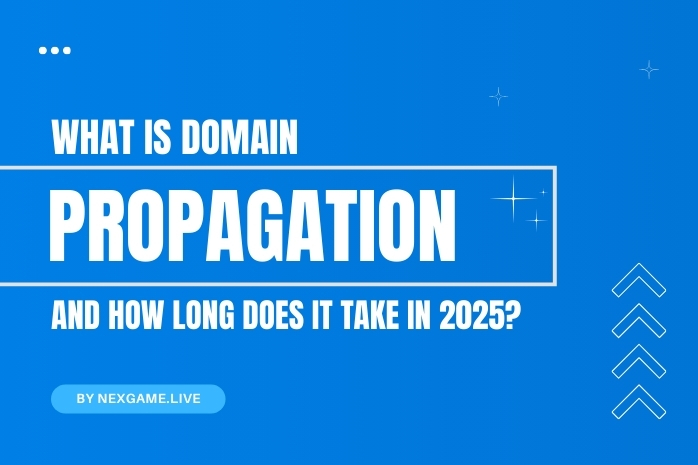What Is Domain Propagation and How Long Does It Take in 2025? Published: 15 May, 2025

When you make changes to your domain settings—like updating nameservers, changing DNS records, or transferring a domain—you might hear about something called domain propagation. For many website owners and beginners, this term can be confusing and sometimes frustrating.
In simple terms, domain propagation is the time it takes for the updated domain information to spread across the internet. Until propagation is complete, your website or email may not work properly everywhere. In this post, we’ll explain what domain propagation is, why it happens, and how long you can expect it to take in 2025.
What Is Domain Propagation?
Every time you update your domain’s DNS settings (like pointing your domain to a new hosting server or changing your email server), those updates need to be distributed across thousands of DNS servers worldwide. This process of distributing the new information is called domain propagation.
The internet relies on a global network of DNS servers that cache (store) domain data temporarily to speed up requests. When you update a DNS record, the old cached data needs to expire before servers can fetch the new info.
During propagation, some visitors might see the old version of your site, while others see the new one, depending on which DNS server they access.
Why Does Domain Propagation Take Time?
Propagation takes time because of the way DNS caching works. Each DNS record has a Time-To-Live (TTL) value, which tells DNS servers how long to keep the cached data before checking for updates.
TTL settings can vary, but common default values range from 1 hour to 24 hours. Some records might even have longer TTLs.
Until the TTL expires, DNS servers continue serving the cached old information, which causes propagation delay.
How Long Does Domain Propagation Take?
In 2025, domain propagation generally takes:
-
From a few minutes to 48 hours for most DNS changes to fully propagate globally.
-
Typically 4 to 6 hours if TTL is set low (e.g., 300 seconds).
-
Some rare cases can take up to 72 hours depending on TTL and ISP DNS refresh rates.
If you want to reduce propagation time, you can lower TTL values a day before making changes. This tells DNS servers to refresh cache more frequently.
How to Check If Propagation Is Complete
You can use tools like NexGame’s DNS Lookup or WHOIS tool to check the current DNS status for your domain. By querying multiple DNS servers worldwide, these tools show whether your domain is pointing to the updated records or still showing old info.
Tips to Manage Domain Propagation
-
Plan changes during off-peak hours to minimize downtime.
-
Lower TTL values in advance if you expect frequent DNS updates.
-
Be patient and avoid making multiple changes during propagation.
-
Always verify updates using trusted tools like NexGame.
FAQs
1. Can I speed up domain propagation?
You can lower TTL values ahead of time, but propagation also depends on ISP caching policies beyond your control.
2. Will my website be offline during propagation?
Not usually, but some users might see the old or new version inconsistently until propagation finishes.
3. What happens if I change DNS records multiple times quickly?
It can cause confusion and delays. It’s best to wait until propagation completes before making new changes.
4. Does propagation affect email services?
Yes. If MX records change, email delivery might be temporarily disrupted.
5. How do I know when propagation is done?
Use DNS checkers like NexGame DNS Lookup to verify if new records are live worldwide.